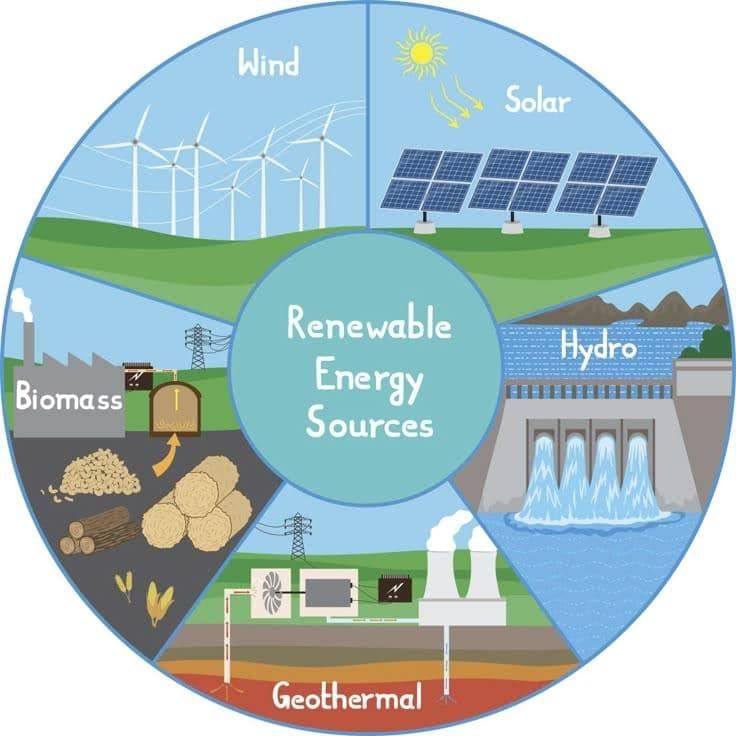Very Short Answer Questions: Natural Resources and Their Use | Social Science Class 8 - New NCERT PDF Download
Q1. What is meant by ‘Nature’?
Ans: Nature includes all living things and non-living things in the environment that are not made by humans, like trees, rivers, and coal.
Q2: Give a single word for the following:
(i) Materials with potential to satisfy human needs but lacking appropriate technology.
(ii) Resources that can be renewed by physical, chemical, or mechanical processes.
Ans:
(i) Stock
(ii) Renewable
Q3: Name any two factors on which resource development depends.
Ans: (i) Technology
(ii) Quality of human resources.
Q4: How can the resources be classified on the basis of origin?
Ans: Resources can be classified as Biotic and Abiotic.
Q5: Classify the following resources as biotic and abiotic.
(i) Metals
(ii) Fauna
Ans: (i) Metals – Abiotic
(ii) Fauna – Biotic
Q6: What is the role of humans in resource development?
Ans: (i) Human beings create technology and institutions to accelerate economic development by interacting with nature.
(ii) They transform materials in the environment into resources for utilization.
Q7: How can resources be divided on the basis of exhaustibility?
Ans: Resources can be classified as Renewable and Non-renewable.
Q8: What is a Resource? Give two examples.
Ans: A resource is anything available in our environment that can fulfill our needs, provided it is technologically accessible, economically feasible, and culturally acceptable. Examples include coal and minerals.

Q9: What are abiotic resources?
Ans: Abiotic resources are composed of non-living things in the environment.
Q10: What are biotic resources?
Ans: Biotic resources come from the biosphere and include life forms like human beings, flora, fauna, fisheries, and livestock.
Q11: Name any two states of India well endowed with solar energy.
Ans: Gujarat and Rajasthan.
Q12. When does nature become a resource?
Ans: It becomes a resource when humans use elements from nature for living or making things, such as cutting trees for furniture or using water for farming.
Q13. What are the three conditions for something to be considered a resource?
Ans: It must be technologically accessible, economically feasible, and culturally acceptable.
Q14. Give two examples of obvious natural resources.
Ans: Water and soil.
Q15. What does ‘exploitation’ mean in this chapter?
Ans: It means taking, using, and consuming natural resources.
Q16. Name the three categories of resources based on their use.
Ans: Essential for life, resources for materials, and resources for energy.
Q17. Give two examples of resources essential for life.
Ans: Air and water.
Q18. Name two examples of resources for energy.
Ans: Coal and solar energy.
Q19. What are renewable resources?
Ans: Resources that can be naturally replenished in a short period, like solar energy and forests.
Q20. State one condition for renewable resources to remain renewable.
Ans: The natural cycles of restoration and regeneration must not be disturbed.
Q21. Give two examples of renewable resources.
Ans: Wind energy and timber.
Q22. Mention two main human actions disturbing natural cycles.
Ans: Industrialisation using fossil fuels and deforestation.
Q23. What is meant by ‘ecosystem services’?
Ans: Natural actions of ecosystems that benefit people, like trees producing oxygen and cleaning water.
Q24. How much oxygen does one mature tree produce daily?
Ans: About 275 litres.
Q25. What are non-renewable resources?
Ans: Resources that take millions of years to form and cannot be replenished quickly, like coal and petroleum.
Q26. How many years may India’s coal reserves last at current usage?
Ans: About 50 years.
Q27. Give two examples of non-renewable resources.
Ans: Iron and gold.
Q28. What is meant by uneven distribution of resources?
Ans: Resources are not found equally everywhere.
Q29. Give one example of conflict caused by resource sharing.
Ans: The Kaveri River water dispute between Karnataka, Tamil Nadu, Kerala, and Puducherry.
Q30. What is the Natural Resource Curse?
Ans: When resource-rich countries stay poor because they rely on selling raw materials instead of making high-value products.
Q31. What does ‘stewardship’ of resources mean?
Ans: Using resources wisely to help them restore and regrow or last longer.
Q32. Name two traditional soil care methods.
Ans: Mulching and multi-cropping.
Q33. What was the main cause of groundwater overuse in Punjab during the 1960s?
Ans: Growing high-yielding crops that need more water and free electricity for pumping.
Q34. Name one pollution problem caused by cement production.
Ans: Cement dust harms lungs and reduces plant growth.
Q35. What is Vṛkṣāyurveda?
Ans: An ancient Indian science of plant care focusing on sustainable agriculture and plant health.
Q36. Name one irrigation method mentioned in Vṛkṣāyurveda.
Ans: Tailored watering methods for different plants and seasons.
Q37. When did Sikkim become 100% organic, and name one benefit of the change?
Ans: In 2016, it increased biodiversity or raised farmers’ incomes.
Q38. What is Bhadla Solar Park, and when was the International Solar Alliance launched?
Ans: Bhadla Solar Park in Rajasthan is one of the world’s largest solar parks; the International Solar Alliance was launched in 2015 by India and France.
Q39. What is the main aim of the International Solar Alliance?
Ans: To promote solar energy use among sunshine-rich countries.
Q40. What does the Bhagavad Gita’s concept of lokasangraha mean?
Ans: Working for the good of all, encouraging thoughtful use of resources.
|
31 videos|128 docs|7 tests
|
FAQs on Very Short Answer Questions: Natural Resources and Their Use - Social Science Class 8 - New NCERT
| 1. What are natural resources? |  |
| 2. How are natural resources classified? |  |
| 3. What is the importance of conserving natural resources? |  |
| 4. How do human activities impact natural resources? |  |
| 5. What are some measures to promote sustainable use of natural resources? |  |
















